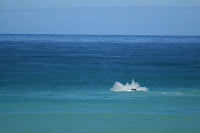

Brother and sister reunited in Strand ... let the carnage begin ...


Watching the rugby at Barts Tavern in Strand with the gang and the double brandy and coke special, GO BOKKE.

Twinkle Tyres (my bakkie) at Muizenberg beach.


De Hoop Nature Reserve, the whales and a weekend away with the folks.




Even Han and Sheeips made it to the sea.


Hi mom!


And a bloody good breach it was!










Picnic tea stop in the middle of the road. Pops (my dad) can still pile in the donuts, some things never change!
 The little stone house we stayed in for the night, looking over the Breede River. I was expecting to see Bilbo Baggins and his hobbit friends around every corner.
The little stone house we stayed in for the night, looking over the Breede River. I was expecting to see Bilbo Baggins and his hobbit friends around every corner.
A cozy fire place and bit of red wine have only one effect ...

The dimming light, the banks of the Breede River, and nobody else around to break the peacefulness.














































